Michelangelo Pistoletto is certainly one of the most appreciated Italian artists at international level thanks to the originality of the language, the quality of the creations and the engaging operations he carried out with extraordinary socio-cultural and ethical commitment.
With the exhibition Ettore Olivero Pistoletto – Michelangelo Pistoletto. Father and Son, curated by Alberto Fiz, which will be presented in Milan (Villa Necchi Campiglio) on March 19th, open from April 19th to October 13th in Biella (Palazzo Gromo Losa and Cittadellarte-Fondazione Pistoletto) and Trivero (Casa Zegna) – he wanted to revisit some moments of the relationship with his father that gave rise to his intense artistic activity. In the interview that follows he explained, as a preview, the motivations useful to outline the deepest identity of his multiform work.
A second part – which touches on other fundamental aspects of his ever expanding and ever-current work – will appear in the next paper issue of “Juliet”, which will be released in early June.
Luciano Marucci: Does the Father and Son exhibition, in addition to identifying the particular ties with your father, also take on a symbolic value in an ethical sense?
Michelangelo Pistoletto: Of course! I would say that there is a strong bond in an ethical and aesthetic sense: an aesthetic transmission of the art and ethics of the inter-human relationship.
In addition to offering intriguing visual materials, does it stimulate a reflection on certain values of the past necessary to nourish the present and to progress?
For me the relationship with the past is important; all my work is based on art as a representation. I took from my father the ability to understand figurative art and I continued on this line. But there is a huge difference between the work of my father, who was a pre-photographer, because he did a figurative painting before the crisis brought by photography, and mine that retrieves photography after what has happened with the modern movement. And it is precisely the space of modernity that brings us together, despite the distance of all modern history. I think the exhibit presents similarities and dissimilarities; a recovery of the father through the need for a conjunction between a great past and a possible future.
How much did the study of the past affect your artistic practice?
Very very much; not only through the paternal teaching, but also with the restoration of the ancient paintings that allowed me to know technically, as well as visually, the various ages of history. But techno also gave me the opportunity to switch the work to a technology that I developed myself.
What happened to your father’s archive?
When my father passed away, I bought from his widow – because at seventy he had remarried – twenty works that, in my opinion, are the most important of the father-son relationship, the ones he made starting in 1968, when I started to follow my advice.
But the deepest inheritance is in the DNA and is preserved in the memory.
The memory in my mirror paintings coexists with a present that is constantly renewed. For me, memory is photography that, with the mirroring background, creates an always different duality; a present moment that becomes past and becomes memory. Present, past and future are three elements that coexist in my works. Working with my father is in some ways to make the reflection of time almost ideological.
Do you think that the exhibition can help to better define your identity as a man and an artist?
I think so. I develop more and more the concept of a non-self-referential artist, but of an activator of relationships that at this moment I carry on with the Third Paradise, with the idea of duality that produces new situations. The first paradise, the natural one; the second, the artificial one; together they generate the third. It is the conjunction of the two elements that creates the third situation. Society is formed by connecting different people and situations, therefore, to create a new world not only individuality is needed, but also duality.
After all, you wanted to create a sort of ideal retrospective that starts from your roots.
It seemed interesting to me to start from the beginning and to establish a link between past and future. For example, I took a picture that my father had made of me when I was three months old and made it a self-portrait through my father. I saw it as a possibility – when I had no ability to understand or to carry out a work – that my father did it for me. My father as a mirror and, at the same time, as a hand that allows me to see myself through him.
Does the connection between the two re-visited epochs, materialized by an unusual exhibition format, fit into the transformative philosophy of your work? On the representative side, what did you privilege?
In the exhibition there are both my father’s and mine’s works, but also various photographic documents. It is the story of a life; an album where the documents of real life are linked with those of the works. In one photograph you see my mother holding me when I was three months old and a painting painted by my father in the background. I managed to retrieve it and exposed it alongside the photograph. It is a document of life that has become part of this exhibition, which in itself can be configured as a work.
What is the difference between this exhibition and the 1973 one in Turin?
In 1973 there were some works that my father had painted for the occasion with mirrored containers in which he could see his image reflected in the objects. Then there were my paintings. In this exhibition, instead, I wanted to trace a historical path, from the Thirties to the present.
Does it underline an interaction between the subjective and the objective self-portrait of the world?
Exact! That’s right.
In your current work, characterized by responsible actions for changing society through creative ideas and projects, is there any reference to the socio-political and cultural situation of the present situation?
Everything is related to the socio-political situation. The actuality of the work of Cittadellarte consists in putting young people in relationship with the school, with the university and also with the common people to develop knowledge, the awareness of the present moment and, at the same time, find a modus operandi that we call the “democratic”.
Are you trying to stay out of the political context by invoking the potential of Culture?
Political politics is in crisis, but at Cittadellarte we do not do political action. We work to formulate proposals. Creation is “proposed”, not just “critical”. But the proposal is not implemented directly in today’s political sense that requires change. We are working on a different vision from the current one with practical definitions, not just ideals.
In your case, is intelligence an essential catalyst for the creative process?
Intelligence is the engine of human beings, the basis of everything. It is clear that it must be considered according to two fundamental points: emotion and reason. Emotion without reason is even dangerous; the same can be said for reason. In the Third Paradise the trinamic symbol means that two external elements are always needed: the two circles, which must be composed in the center to give life to a new situation.
So yours is not an art for art.
It is not absolutely self-referential; it is phenomenological. My entire work can be considered scientific.
But what is it that makes you stay topical?
Give the best of myself for the us.
[…]
March 7th, 2019
edited by Luciano Marucci
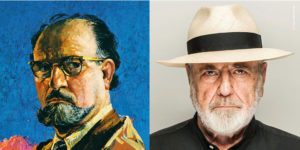 “Self-portrait” by Ettore Olivero Pistoletto, painted in 1958; alongside a photographic portrait of his son Michelangelo made by Piero Martinello (courtesy Archivio Cittadellarte-Fondazione Pistoletto, Biella)
“Self-portrait” by Ettore Olivero Pistoletto, painted in 1958; alongside a photographic portrait of his son Michelangelo made by Piero Martinello (courtesy Archivio Cittadellarte-Fondazione Pistoletto, Biella)
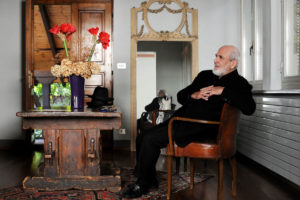 Michelangelo Pistoletto in his home in Cittadellarte (courtesy Cittadellarte-Fondazione Pistoletto, Biella; ph Pierluigi Di Pietro)
Michelangelo Pistoletto in his home in Cittadellarte (courtesy Cittadellarte-Fondazione Pistoletto, Biella; ph Pierluigi Di Pietro)
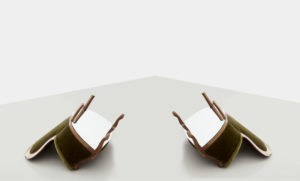 Michelangelo Pistoletto, “Upside down furniture”, 1976 (courtesy Archivio Cittadellarte-Fondazione Pistoletto, Biella; ph Archivio Pistoletto)
Michelangelo Pistoletto, “Upside down furniture”, 1976 (courtesy Archivio Cittadellarte-Fondazione Pistoletto, Biella; ph Archivio Pistoletto)
 Michelangelo Pistoletto, “The drawing in the mirror”, 1979 (courtesy Archivio Cittadellarte-Fondazione Pistoletto, Biella; ph Archivio Pistoletto)
Michelangelo Pistoletto, “The drawing in the mirror”, 1979 (courtesy Archivio Cittadellarte-Fondazione Pistoletto, Biella; ph Archivio Pistoletto)
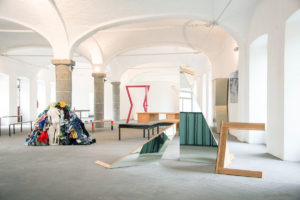 View of a hall of Cittadellarte with the works of M. Pistoletto (courtesy Archivio Cittadellarte-Fondazione Pistoletto, Biella; ph Eleonora Angius)
View of a hall of Cittadellarte with the works of M. Pistoletto (courtesy Archivio Cittadellarte-Fondazione Pistoletto, Biella; ph Eleonora Angius)
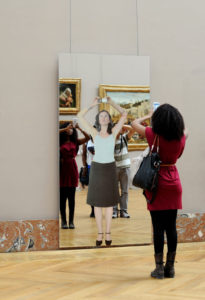 Michelangelo Pistoletto, “Girl taking a picture”, 1962-2007 (courtesy Cittadellarte-Fondazione Pistoletto, Biella; ph Pierluigi Di Pietro)
Michelangelo Pistoletto, “Girl taking a picture”, 1962-2007 (courtesy Cittadellarte-Fondazione Pistoletto, Biella; ph Pierluigi Di Pietro)
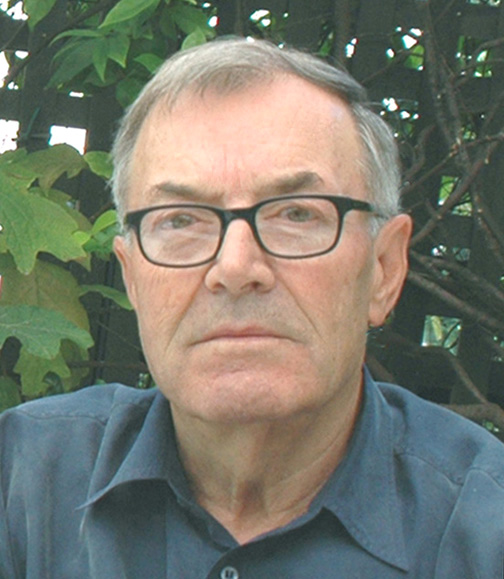
I’m Luciano Marucci, born by case in Arezzo and I look my age… After a period in which I dedicated myself to journalism, applied ecology, environmental education and traveling the world, I occasionally collaborated as an art critic with specialized magazines (“Flash Art”, “Arte & Critica”, “Segno”, “Hortus”, “Ali”) and with varied cultural periodicals. Since 1991 in “Juliet” art magazine (in print and edition) I have regularly been publishing extensive services on interdisciplinary topics (involving important personalities), reportages of international events, reviews of exhibitions. I have edited monographic studies on contemporary artists and book-interviews. As an independent curator I have curated individual and collective exhibitions in institutional and telematic spaces. I live in Ascoli Piceno.






NO COMMENT